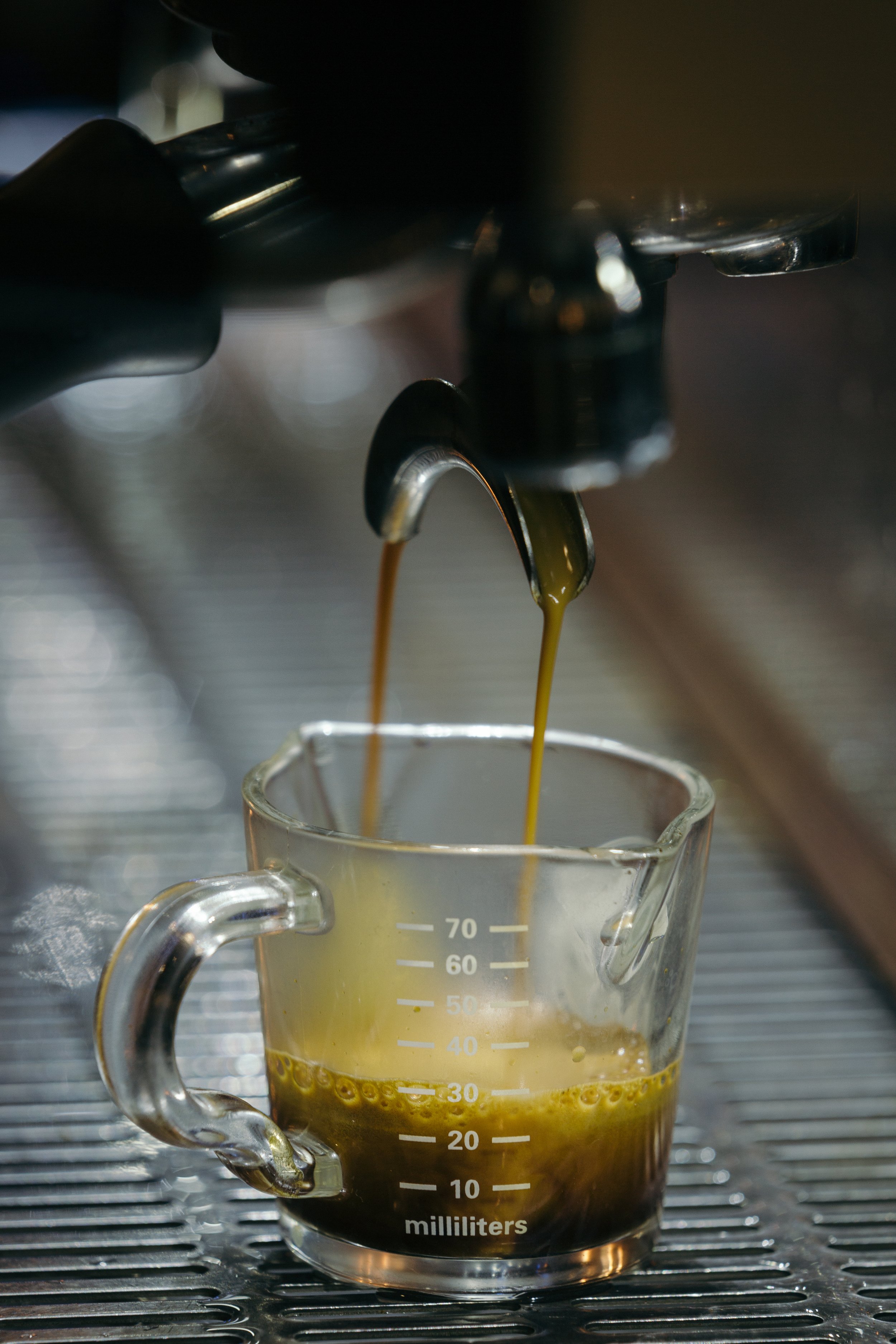What is coffee bean degassing and how does it impact my brewed coffee and espresso?
Crema is the accumulation of CO2 bubbles on top of the liquid espresso. Properly degassed coffee will help to produce a more consistent espresso shot with the right amount of crema.
Coffee bean degassing is a natural process that occurs in all roasted coffee. This is the process for the releasing of gases (mostly carbon dioxide) from the bean. This process is normal and is essential to the taste experience you will have with the coffee you are brewing. There are several key points to the degassing process and why it is important to understand it. If you are a coffee retailer, coffee shop owner, or simply a coffee aficionado, here’s some info about coffee degassing that you can use to improve your understanding of the coffee bean and how it impacts the drink you love.
After coffee is finished roasting it will immediately begin to degas, which simply means to release carbon dioxide into the atmosphere. The roasting process takes the hard green coffee bean through a journey of applied heat converting it into a consumable product. During the roasting process, which is also called the development process, the bean undergoes physical and chemical changes resulting in a product with new flavors and density. These changes produce chemical reactions that occur even after the beans are no longer being roasted. And depending on how the bean is treated during the roasting process will determine how fast the CO2 escapes from the beans.
The sooner after roasting you brew the coffee, the less degassing that occurs. And with freshly roasted coffee, you can literally see the gas bubbles escaping the brew right in front of you. You will notice big bubbles reaching out of the brewer. And incidentally, you will experience the most aroma from your cup at this moment. It’s a delightful experience.
How dark the coffee is roasted will determine the speed at which the gases will escape the bean naturally. And gases escaping essentially means the volatile compounds, or flavors, are escaping, too. The moment you grind the coffee you rapidly accelerate the degassing process. This is why it is widely accepted you should always grind the beans in the moments before you brew it. Here’s a transcript from a 2019 Specialty Coffee Association Expo Lecture explaining The Science of Coffee Freshness with scientific associate at the Zurich University of Applied Sciences, Samo Smrke.
Espresso and Degassing Coffee
While brewing coffee by hand or in your brewer is generally better the fresher it is, making espresso is perhaps the one big exception. If you understand how brewing espresso is different than a pour over our drip coffee, you will note the application of pressure being one major difference. Coffee with fewer degassing days will demonstrate overly bubbly espresso shots, with overly large amounts of crema (the creamy bubbly foam accumulating at the top of a shot of espresso). Crema is mostly carbon dioxide. If your espresso shot has an abundance of crema, it will eventually fall flat and dramatically impact the flavor of your beverage. Your objective is to find a balance between the acceptable level of crema while managing the best tasting espresso for your beverage.
Degassing coffee for espresso is essential to providing the most tasty and consistent coffee for your customers. And every espresso bean requires a suggested degassing timeframe. If you work with a commercial coffee roaster, you should ask what they suggest is the proper degassing time for the espresso you buy. If they don’t have a suggestion, that is an important signal they may not be very experienced in how to properly roast and brew espresso. At Reverie Coffee Roasters, we are currently most satisfied with our Boneshaker Espresso roasted within 7 to 14 days of use.
The time window for Reverie’s ideal espresso age has shifted over the years. Until about 6-months ago (in March 2023), we had been aiming for espresso roasted 5 to 7 days prior. The important thing to note here is that it will change from time to time, and you need to know how to evaluate the best process and products for your operation. Homing in on your espresso skills is crucial for being able to properly manage coffee shop product consistency.
Espresso Inventory and Degassing
Once you understand your ideal degassing timeframe, you want to be sure you always keep enough espresso on hand to assure you don’t run out of degassed coffee. If you find that your ideal espresso peaks in freshness at 14-days, you will need at least 2-weeks of inventory on standby. Ask your roaster what the roast date is of the coffee you ordered. Some coffee roasters send out degassed espresso, so you may need to adjust your inventory purchasing to accommodate the timeline.
Need Assistance?
If you need assistance with your espresso program, reach out to your wholesale coffee supplier. And if you are in search of a coffee supplier that is trained and equipped to help you develop your coffee skills, reach out to our team. As a specialty coffee roaster, we are here to help you.

